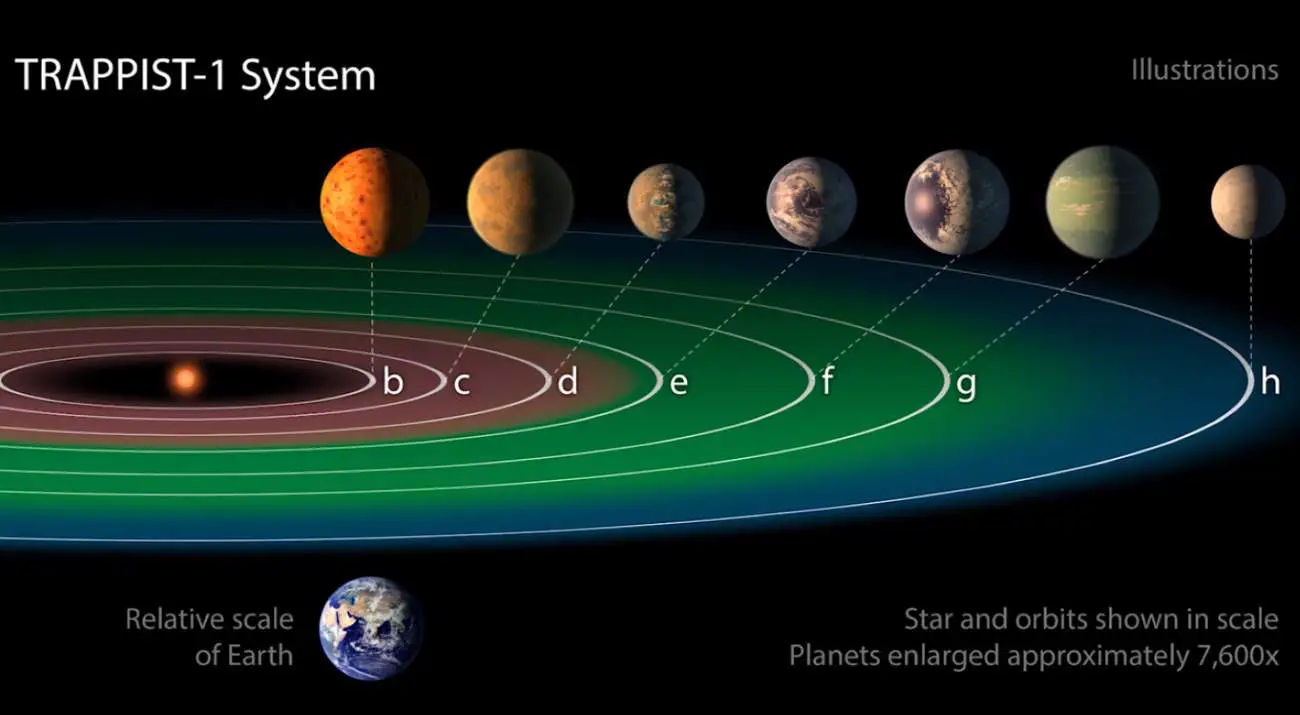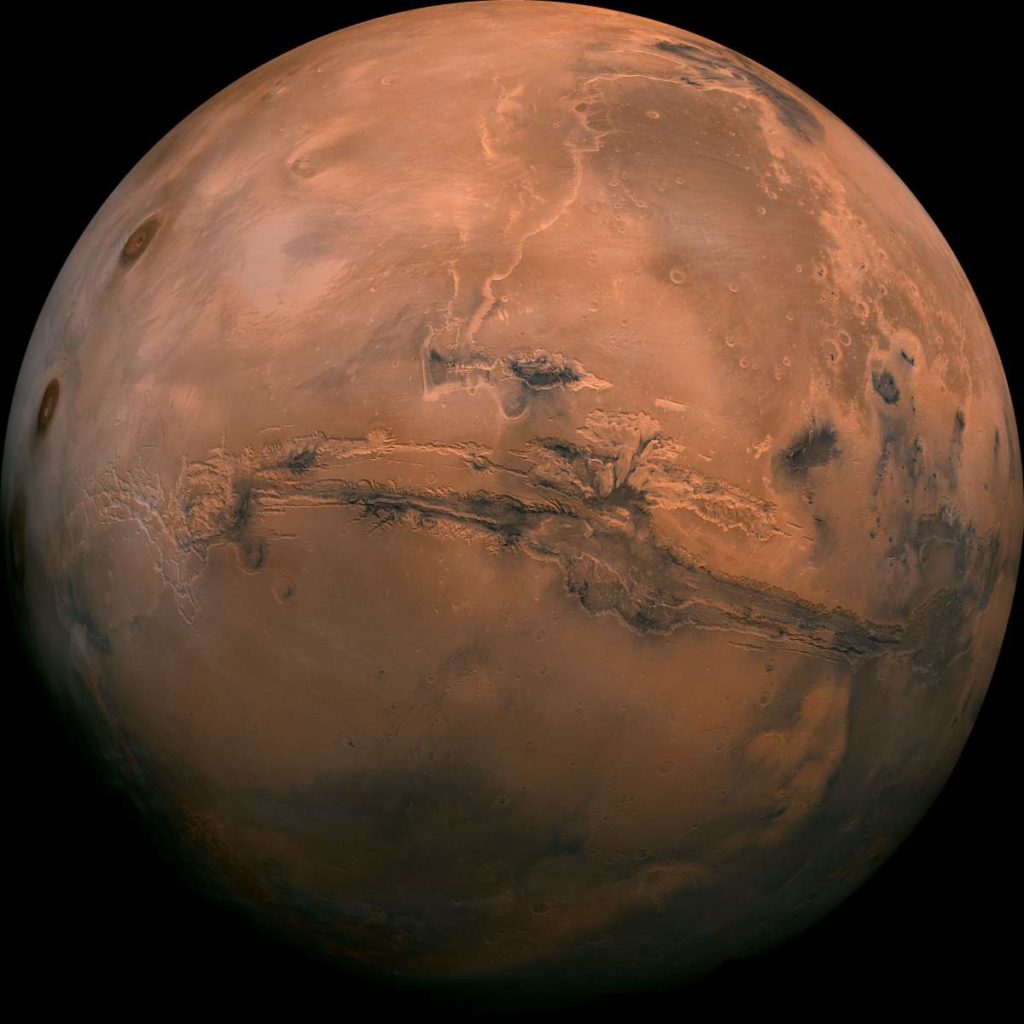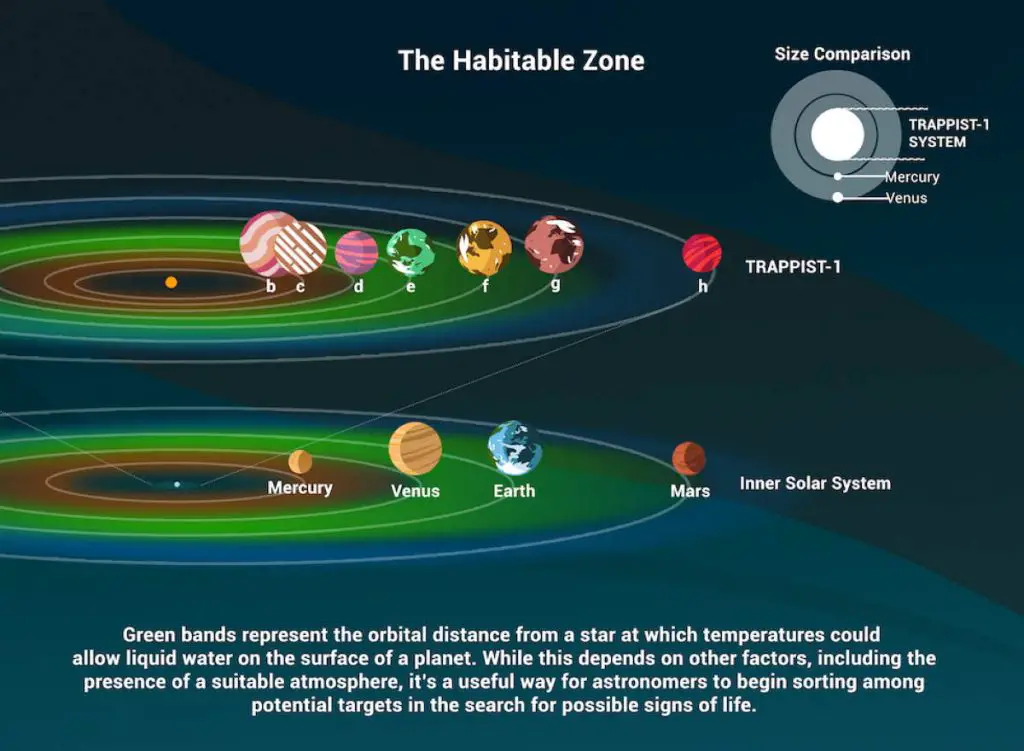A new study published on April 26, 2018, suggests that TRAPPIST-1e, an exoplanet orbiting the red dwarf star TRAPPIST-1, has a large iron core. This could mean that the planet TRAPPIST-1e may have a protective magnetosphere (see notes 1) as we have here on Earth.
In their study, Suissa and Kipping took advantage of recent studies that measured the planetary masses of the

Related: Exoplanet Travel Bureau by NASA
TRAPPIST-1e “has a large iron core”
In particular, for planet c, Suissa and Kipping found that the probability of an iron core is modest at 57%. According to the researchers, thus ambiguity remains regarding TRAPPIST-1c’s interior. For planet Trappist-1e, however, 99.3% of the posterior samples are consistent with a silicate-iron model indicating strong evidence for an iron core, researchers conclude. They published their findings with the title of “TRAPPIST-1e Has a Large Iron Core”.

On February 22, 2017, NASA has announced that seven Earth-sized planets have been observed by NASA’s Spitzer Space Telescope around ultra-cool red dwarf star TRAPPIST-1, with three of these planets are firmly in the habitable zone. Further observations revealed that the system contains water, and then the Hubble Space Telescope has revealed that the planets also have atmospheres.
This may seem like good news for the search for extraterrestrial life, but, all seven planets of the TRAPPIST-1 system are likely to be tidally locked, which means one side of each planet permanently facing the star, making the development of life there “much more challenging”.

Why having an iron core matter?
With having an iron core, Trappist-1e is likely to have a magnetosphere. Planets having active magnetospheres, like the Earth, are capable of mitigating or blocking the effects of solar radiation or cosmic radiation, which also protects all living organisms from potentially detrimental and dangerous consequences.
Without the magnetosphere, for example, the Earth’s atmosphere could be stripped by the solar particles, exactly like it happened on Mars when it lost its own magnetic field. By contrast, Earth’s magnetosphere seems to have kept our atmosphere protected.

TRAPPIST-1 Planets Flyaround Animation published by the NASA Spitzer channel
The video above depicts an
The planets appear in the order of innermost to outermost planets. TRAPPIST-1b, closest to the star, was modeled on Jupiter’s moon Io, which has volcanic features due to strong gravitational tugs. TRAPPIST-1c is shown as a rocky, warm world with a small ice cap on the side that never faces the star. TRAPPIST-1d is rocky and has water only in a thin band along the terminator, dividing the dayside and night side.
TRAPPIST-1e and TRAPPIST-1f are both shown covered in water, but with progressively larger ice caps on the night side. TRAPPIST-1e has also a slightly higher density than Earth, indicating a terrestrial rock and iron composition. TRAPPIST-1g is portrayed with an atmosphere like Neptune’s, although it is still a rocky world. The farthest planet, TRAPPIST-1h, is shown as covered in ice, similar to Jupiter’s icy moon Europa.
The background stars are what you would see if you were in the TRAPPIST-1 system. Orion passes behind the planets, recognizable but distorted from what we’re familiar with, in addition to Taurus and Pleiades.
Notes
- A magnetosphere is the region of space surrounding an astronomical object in which charged particles are manipulated or affected by that object’s magnetic field. It is created by planets having active hot iron and nickel or metallic cores, whose motion generated a planetary magnetic field, but such fields can also occur in stars by the interactions of plasma. Planets having active magnetospheres, like the Earth, are capable of mitigating or blocking the effects of solar radiation or cosmic radiation, that also protects all living organisms from potentially detrimental and dangerous consequences.
Sources
- “TRAPPIST-1e Has a Large Iron Core” by Gabrielle Suissa & David Kipping (Department of Astronomy, Columbia University). Study published on arxiv.org
- “One Of The Trappist-1 Planets Has An Iron Core” on Universe Today
- TRAPPIST-1 on Wikipedia
- Magnetosphere on Wikipedia
- Earth’s Magnetosphere on NASA.gov
- Moon Landings: All-Time List [1966-2025] - February 2, 2025
- What Is Max-Q and Why Is It Important During Rocket Launches? - January 16, 2025
- Top 10 Tallest Rockets Ever Launched [2025 Update] - January 16, 2025
